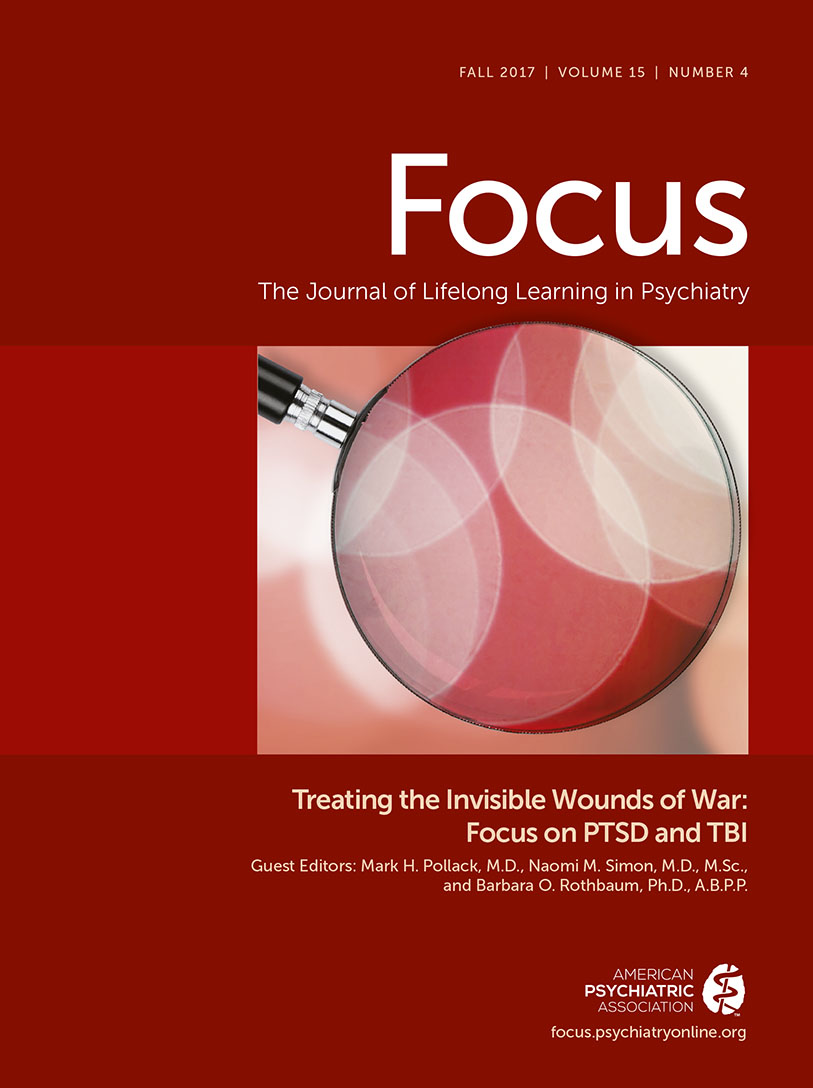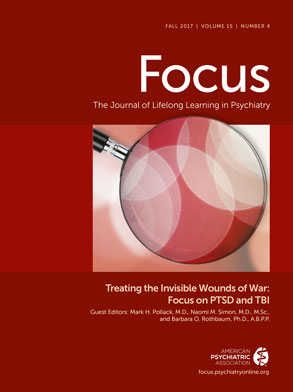The editors asked for “brief essays on interesting or key developments in psychiatry that practicing clinicians should be familiar with as they look ahead.” I would like to take a somewhat contrarian approach and focus on looking backward, with the goal of preserving, and even enhancing, aspects of training and practice, which, I believe, may receive less attention in our current therapeutic climate. In doing so, I feel somewhat like a curmudgeon but, I hope, like the character in the best-selling book
A Man Called Ove (
1), a curmudgeon with good intent.
Having spent my entire four-decade career as a clinician, teacher, and administrator in an academic medical center, I have witnessed the advances but also have been disappointed in our ability to successfully treat major mental illness. In the past ten or so years, in psychopharmacology, we have not made much progress in translating our research into novel treatments. Although progress has been made in the use of neuromodulation technologies, these are expensive and not all that accessible to large groups of patients in desperate need. Our knowledge of imaging and genomics has exploded, but, again, their clinical application in psychiatry remains to be seen. We all are aware that patients suffering from mood disorders, schizophrenia, obsessive-compulsive disorder, posttraumatic stress disorder, and Alzheimer’s disease (to name just a few) often do not respond adequately to our state-of-the-art medications. Their suffering and that of their families are very evident.
On the other hand, we have made progress with nonpharmacological approaches to the major mental illnesses, including evidence-based psychotherapies, such as cognitive-behavioral and dialectical behavior therapy, interpersonal therapy, trauma-focused therapy, acceptance and commitment therapy, family-focused therapy, and prolonged exposure therapy. And many experts in the treatment of psychotic disorders strongly believe that the psychosocial elements are equally or in some cases more important than medications to recovery and functional improvement.
During my residency and in the first few years postresidency, the books that had the most influence on me (and continue to have their hold to this day) were
Persuasion and Healing (
2), by Jerome Frank;
The Interpretation of Schizophrenia (
3), by Silvano Arieti;
The Technique and Practice of Psychoanalysis (
4), by Ralph Greenson; and
Existential Psychotherapy (
5), by Irvin Yalom. Dr. Frank’s book gives an overall framework elucidating the basic elements of a healing relationship, irrespective of whether the healer is a psychiatrist or other mental health clinician, medicine man, shaman, or, I will add, a psychopharmacologist. I would not turn to Dr. Arieti’s book to understand the biology or pharmacotherapy of psychosis, but his painstaking work talking with psychotic patients and trying to understand their communications seems to be a lost art, but necessary for building a therapeutic relationship. Although I am neither an existential therapist nor a psychoanalyst, the latter two books focus on the therapeutic dyad and the need for the clinician to be in tune with the patient and his or her affective state and to be in the moment with the patient. Even Greenson’s book, although describing traditional analytic technique, includes chapters on the working alliance and the real relationship between the patient and the analyst that are applicable to many therapy settings today.
I would venture to say that many of our current and recent trainees have not been exposed to (most of) these works. I have no problem with this, but I do have a problem with training that does not stress the fundamental importance of attention to the relationship. How many times have we heard residents state, “This is a medication case, not a psychotherapy case”? I know exactly what they mean, but the implication is that the relationship with a patient seen for medication is not a therapeutic one in the same sense as it is for a “psychotherapy” patient. I have often thought that the best psychopharmacologists I know also have wonderful psychotherapy skills. I have no data, but I would guess that the psychopharmacologist who does not truly engage a patient will do many one-time consultations with little follow-up.
So, in trying to fulfill the editor’s wish to “look ahead,” I hope we do so with the understanding that healing is a process, often involving two people (although it certainly can involve more), where the healer must use skills over and above those specific to pharmacology, neuromodulation, virtual reality, deep brain stimulation, or whatever new treatment is shown to be helpful. And these skills are embedded in the relationship between healer and patient, as Frank so eloquently taught us.

